Away from their pockets of mass-tourism development, Spain’s Canaries are an archipelago of endlessly varied landscapes, slow-going villages, lively towns, gastronomic delights and a thriving local culture that is at once firmly Spanish and distinctively Canarian. With two Unesco eoparks and four national parks, these eight sun-baked islands are home to a growing lineup of sustainable tourism initiatives – and you’re never far from a dip in the Atlantic.
This week, Spain opened its borders to British tourists, allowing them to enter without a Covid test or proof of vaccination. The change prompted UK tour operators to resume holidays to the Canary Islands – the only part of Spain exempt from the Foreign Office’s non-essential travel warning. That doesn’t mean that going on holiday to the Canaries is completely straightforward – along with the rest of Spain the islands are on the amber list, meaning visitors returning to the UK are required to self-isolate for 10 days and take a Covid test before landing, and two more on days two and eight. After a flurry of contradictory comments by ministers last week, Boris Johnson said no one should be going on holiday to amber-list destinations, though that hasn’t stopped airlines increasing the number of flights to them, encouraged by consumer demand. As travel expert Paul Charles put it: “Consumers are voting with their feet and booking trips to Spain; they know the rules, they know it’s not illegal and they know they have to self-isolate when they get home.”
Lanzarote
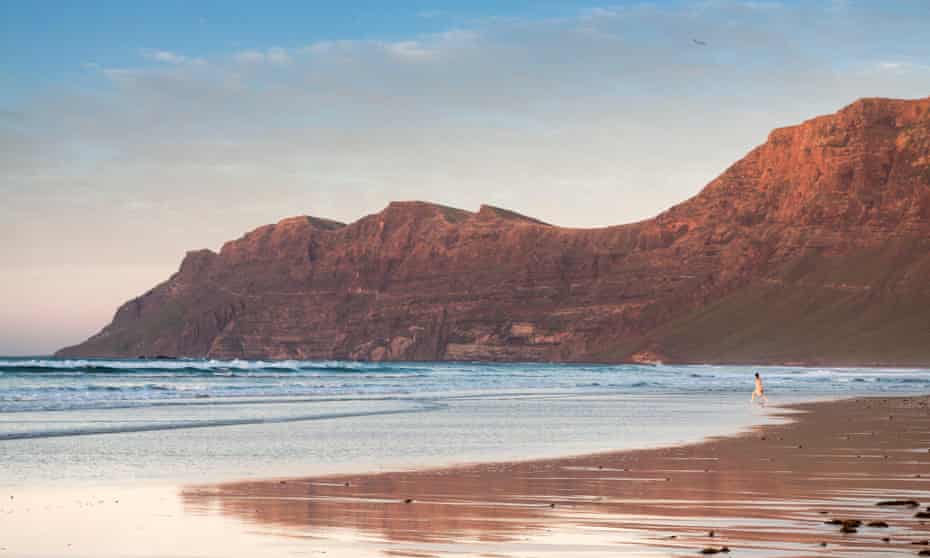
Beyond its resort towns, Lanzarote means wild coasts, white-walled villages, rust-red volcanic cones, swirling bougainvillaea and buzzy farmers’ markets. It also has lively arts and gastronomy scenes. The entire island is a Unesco geopark.
What to do
Base yourself in the rugged north, where low-key fishing villages – Arrieta, Punta Mujeres, La Santa, Órzola – and major works by the Lanzarote-born artist César Manrique await, including the Casa-Museo César Manrique (in leafy, historical Haría) and the Jameos del Agua.
Inland, Teguise was Lanzarote’s capital until 1852; its protected historical core is packed with ancient mansions, fanning out from a restored 15th-century church. The nearby village of Teseguite has classic Canarian architecture, a 17th-century chapel and a couple of wonderful pottery workshops.
Lanzarote’s increasingly lauded wine region, known for its volcanic malvasia grape, is best savoured with local experts Wine Tours Lanzarote, who visit independent wineries as well as La Geria’s big-name bodegas. For the lunar-like Parque Nacional de Timanfaya, sidestep the crowds by hiking the coastal Ruta del Litoral path, or hop over into the Parque de los Volcanes.
Surf-friendly Famara beach in the north is one of the Canaries’ most beautiful, and you can do day trips to the dazzling beaches at Punta del Papagayo in the south. Don’t miss the natural pools in Punta Mujeres and, time permitting, all-natural Playa del Risco (accessible by a one-hour hike), or Los Caletones coves near Órzola.
Where to stay
With its island-inspired boutique design, circular pool and divine breakfasts, Álava Suites (doubles from €110) in Teguise is a great place to tap into the local creative scene. Lanzarote Retreats (doubles/rentals from €115/95) has stylish yurts, stone-built cottages and a solar-warmed pool at its eco-finca in Arrieta.
Eat and drink
People travel from all over Lanzarote for fresh grilled fish, seafood paella and other local delights at Casa de la Playa, overlooking Arrieta’s beach (mains €10-€15). Bar La Piscina, by the Punta Mujeres pools, is a go-to for typical tapas (chunky tortilla, seafood salpicón) at around €3-€10. La Santa’s Alma Tapas & + is a favourite for its creative, market-based small plates (€8-€15), which might include ossobuco cannelloni.
Isla Graciosa
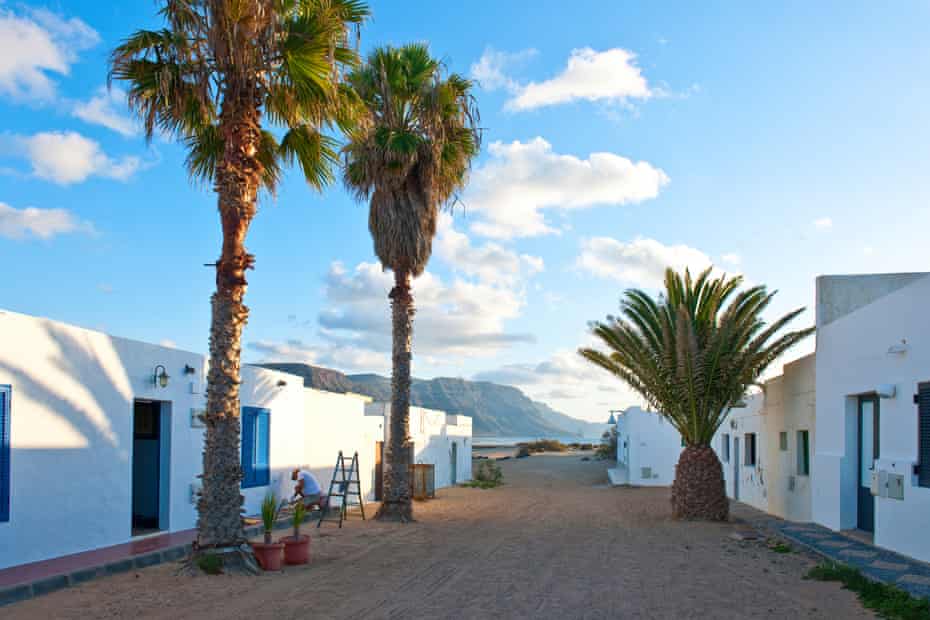
Off northern Lanzarote and reachable only by ferry from Órzola, sand-dusted Graciosa is a go-slow, back-to-nature escape (no paved roads here). It became the official eighth Canary Island in 2018.
What to do
Cycle to Caribbean-worthy Playa de las Conchas, hike up Las Agujas Grandes or Montaña Amarilla volcanoes, swim at golden Playa Francesa and wander the “capital”, Caleta de Sebo, with its views of Lanzarote’s Famara cliffs. La Graciosa sits within the Parque Natural del Archipiélago Chinijo, which protects various uninhabited surrounding islets known for their rich birdlife; explore them with conservation-focused Eco-Insider.
Where to stay
Family-owned Pensión Enriqueta (+34 928 842 051, doubles €35) is one of La Graciosa’s tourism pioneers, with cheery, rustic rooms in Caleta de Sebo.
Eat and drink
El Marinero, opposite Caleta de Sebo’s 20th-century church, is a locally loved tapas haunt serving home-cooked tortilla and seafood rice dishes (up to €10). Or rustle up a platter of Lanzarote goat’s cheese at beachside Casa Margucha/Restaurante Girasol (tapas €10-€20).
Fuerteventura
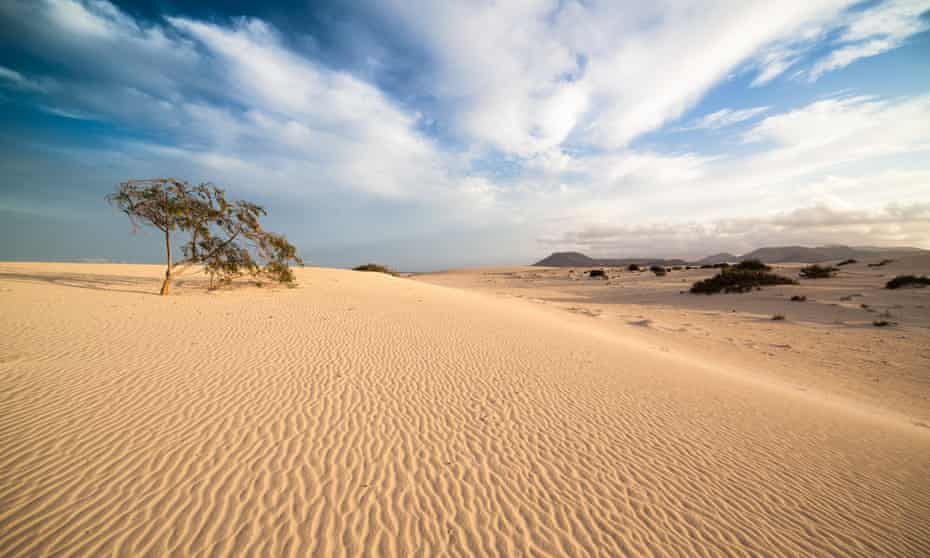
With its salty breezes, renowned surf, volcanic landscapes and honey-gold coastline, Fuerteventura is the Canaries’ destination for beach bliss..
What to do
Stay in northern Fuerteventura to soak up the surf vibe in El Cotillo, Corralejo and Lajares, hike to tiny, beach-side Majanicho, take a day trip to the near-deserted Isla de Lobos (for snorkelling, paddleboarding and more) and get away from it all in the dune-lined Parque Natural de Corralejo. Around 15km south from Corralejo, La Oliva is known for its historical architecture and the Centro de Arte Canario Casa Mané, devoted to Canarian greats.
In the lusher, central-interior region, explore slow-paced villages such as Betancuria (Fuerteventura’s oldest settlement, surrounded by a mountainous natural park), pint-sized Casillas del Ángel and Pájara (home to a 17th-century Aztec-style church). Then drop down to Ajuy, where a black sand beach hosts fresh-as-it-gets fish restaurants. On the east coast, Pozo Negro is another fishing hamlet popular for its seafood restaurants.
On the unmissable southern Península de Jandía (it’s worth tacking on a couple of days here), you’ll uncover dreamy, protected beaches (including Playa de la Barca, Playa del Matorral and Cofete), surfy La Pared village and the lonely Punta de Jandía lighthouse.
Where to stay
A 200-year-old volcanic-stone home just north-east of La Oliva has been sensitively restored as the Hotel Rural Mahoh (doubles from €60 B&B), with nine rustic rooms, a pool and a superb Canarian restaurant. The Avanti Lifestyle Hotel (doubles from €120) sits right on the coast in Corralejo, and if that’s two far to walk there’s a rooftop Jacuzzi from which to take in the sea view.
Eat and drink
In Fuerteventura’s often overlooked capital, Puerto del Rosario, La Jaira de Demián is an island highlight for creative dishes, such as entrecot “tacos” with listán negro sauce (€8-€15). The delightful terrace at El Cotillo’s nautical La Vaca Azul overlooks a volcanic cove; try the fresh fish with papas arrugadas (mains €15). Another seafood favourite is La Lonja in Corralejo’s port (dishes €10-€20).
Gran Canaria
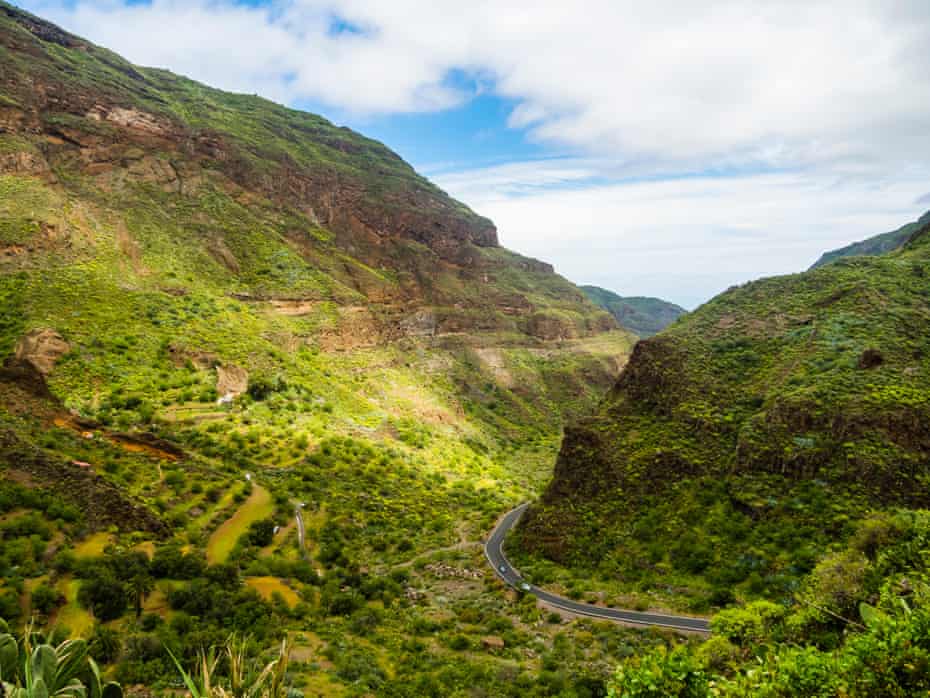
Gran Canaria might be famous for its southern resorts, but it’s also a superbly scenic land of forested hills, plunging valleys, intriguing historical sights and seafood restaurants .
What to do
Stay in Gran Canaria’s leafy north, where you’ll find the lively capital, Las Palmas, Spain’s ninth-largest city – and with a standout beach. The lofty, mountainous interior unfolds in a series of dramatically located villages, exhilarating hiking trails, volcanic calderas and distant peaks.
Las Palmas’ historical Vegueta neighbourhood has a magnificent cathedral (dating back to the 15th century), the Columbus-themed Casa-Museo de Colón, the Centro Atlántico de Arte Moderno and other worthwhile sights. Nearby, Gáldar has some of Gran Canaria’s major pre-Hispanic archaeological remains (the Cueva Pintada); Arucas is filled with colonial-era architecture and a dazzling neo-gothic church; and the lush Barranco de Guayadeque makes a popular excursion (hike out beyond the crowds). For beaches, try north-west coast villages such as Sardina del Norte and Puerto de las Nieves.
In the rugged, elevated heart of the island, explore Teror (with its 18th-century church and weekly local market) and Artenara, the highest village (known for its cave houses). And go walking around pretty Tejeda, the much-photographed Roque Nublo and Gran Canaria’s tallest peak, Pico de las Nieves (1,949m). If time allows, squeeze in Agüimes, Temisas, Fataga and San Bartolomé de Tirajana, or head further south to mellow Mogán and, beyond, to the protected Maspalomas dunes.
Where to stay
Hotel Fonda de la Tea has rustic rooms, apartments and independent homes in Tejeda (all from €105). In Las Palmas, Bed and Chic (doubles from €52) makes a boutique splash across two tile-floored 20th-century buildings, or stay at the beautifully revamped, 19th-century landmark hotel Santa Catalina (doubles from €110).
Eat and drink
In Las Palmas, Deliciosamarta (dishes from €15) serves innovative seasonal menus powered by (mostly) Canarian produce – tuna tartare, truffled gnocchi, Lanzarote’s Uga salmon. Tejeda’s creative Restaurante Texeda (dishes from €5) focuses on homegrown farm ingredients and its own craft beers; the rice dishes are a signature.
Tenerife
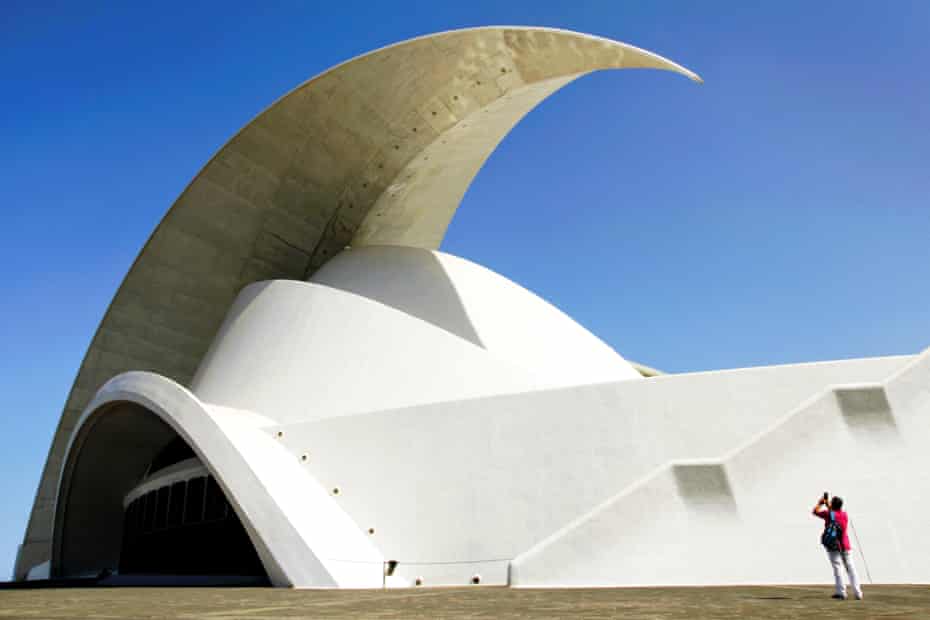
Dominated by the snow-dusted Pico del Teide, Tenerife is the most-visited Canary Island – a mix of lively towns, twinkling beaches, remote mountains, cultural delights, evocative villages, and a lava-sculpted, Unesco-listed national park.
What to do
Home to laid-back villages, rugged mountains and some of the island’s outstanding architecture, northern Tenerife offers a refreshing contrast to the developed south. There’s no better introduction than the capital, Santa Cruz de Tenerife, where you can explore Santiago Calatrava’s performing arts centre the Auditorio de Tenerife Adán Martín, the contemporary design TEA gallery and other cultural highlights, before diving into the shopping, dining and drinking scenes.
Just inland, pastel-painted La Laguna is Tenerife’s prettiest town; its centre bursts with historical, Canarian-style mansions. There’s more classic architecture over in La Orotava (also known for its crafts), near the attractive beach resort of Puerto de la Cruz while further along the northern coastline you’ll reach peaceful, historic Garachico, with its attractive sea pools.
Spain’s highest peak, El Teide (3,715m), headlines any Tenerife itinerary, but it doesn’t take long to slip away from the crowds along the hiking trails of the lunar Parque Nacional del Teide. Stretching across the island’s north-eastern tip, the ancient Anaga Mountains are another walkers’ highlight; drop into San Andrés village for beachfront seafood restaurants, as well as surfy north-coast Roque de las Bodegas.
Where to stay
La Laguna Gran Hotel (doubles from €94) in San Cristobal de la Laguna is a stylishly reimagined 18th-century manor with a rooftop pool. An impressive 17th-century mansion on Garachico’s palm-dotted plaza, La Quinta Roja (doubles from €114) has smart, wood-beamed rooms around a leafy courtyard.
Eat and drink
In Santa Cruz, Guannabi (mains €15-€25) fuses Canarian, Peruvian and Mexican flavours in glorious rice dishes and other market-fresh bites. La Laguna’s Tasca 61 specialises in organic seasonal cooking (up to €10) such as curried vegetable salad and artisan cheeses, as well as Tenerife-brewed craft beers. For super-fresh fish (€10-€20) served alongside papas arrugadas, salad and mojos, try the harbour-side La Cofradía in Puerto de la Cruz.
El Hierro

Distant El Hierro, the Canaries’ western-most island, is an off-the-beaten-track adventure, with thrilling footpaths, sweeping viewpoints, glinting Atlantic pools and misty forests. A Unesco-listed geopark since 2014, it’s on its way to becoming the first island in the world to run on exclusively renewable energy.
What to do
El Hierro’s most spectacular base is El Golfo, where the volcanic coastline sits at the foot of an amphitheatre-like, 1,000m-high natural wall. The two main towns here, Tigaday and La Frontera, blend together, with restaurants, a food-and-crafts market and a 19th-century church. The popular (and challenging) Camino de Jinama hike begins (or ends) in La Frontera.
Explore some of the up-and-coming wineries (Bodega Elysar, Bodegas Uwe Urbach), the bottle-green El Pinar forest and the laurisilva (laurel forest) at the heart of the island. Then venture out to El Hierro’s far western tip, where you’ll find wind-twisted juniper trees, the 18th-century chapel of Ermita de Nuestra Señora de los Reyes and the isolated Orchilla lighthouse. In the low-key capital, Valverde, the 18th-century church and down-to-earth tascas are worth a visit. At the La Peña viewpoint, the Mirador de la Peña restaurant, designed by César Manrique, has views across El Golfo.
Divers will want to plunge into the tranquil waters off La Restinga, which is also renowned for its seafood restaurants. Another El Hierro speciality are its sparkling natural pools; jump in at El Golfo’s La Maceta, Los Sargos or Charco Azul, at Cala de Tacorón near La Restinga or at Tamaduste in the north-east.
Where to stay
La Frontera’s boho-feel El Sitio (doubles from €50) occupies a thoughtfully converted, sustainably run bodega with seven lava-stone casitas and views across El Golfo. Or stay at the east-coast Parador de El Hierro (doubles from €97), which has an elegant historical look, a pool with a view of the Atlantic and a smart restaurant.
Eat and drink
Opposite La Frontera’s pretty plaza, Joapira specialises in Venezuelan-influenced herreño cooking (mains €10), including stuffed cachapas and peppers filled with local goat’s cheese. In La Restinga, Casa Juan offers creative island produce, with seafood rice dishes among its signature dishes (€10-€15).
La Palma
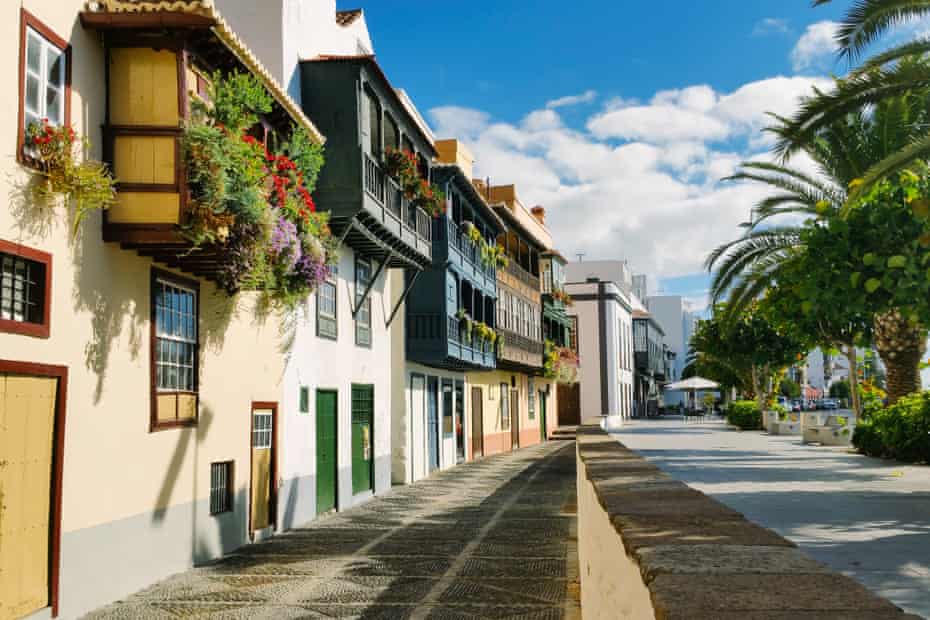
From its desert-like southern expanses, dotted with volcanoes, to the pine-forested north, “La Isla Bonita” – protected as a Unesco biosphere reserve since 2002 – is a place for escaping into the wild.
What to do
Arguably the most beautiful of the Canaries’ capitals, Santa Cruz de la Palma has a 16th-century core filled with traditional balconied homes, renaissance architecture and the glittering Iglesia del Salvador. With a volcanic beach, it makes a characterful, convenient base.
Most visits to La Palma start with the 47 sq km Parque Nacional de la Caldera de Taburiente, whose scented pine forests sprawl around the Caldera de Taburiente depression (accessed from El Paso or Los Llanos). Hiking here is a Canary Islands highlight, especially around the Barranco de las Angustias, the Roque de los Muchachos and the 1,854m-high Pico Bejenado. There’s more walking among the Los Tilos laurel forests in north-east La Palma. Take a dip in the saltwater pools in nearby San Andrés, with its 16th-century church.
In the far south, Fuencaliente’s bare, volcano-studded landscape produces distinctive malvasia vines; visit wineries such as Bodegas Teneguía, and drive to the wonderfully scenic salt flats, beach and lighthouse on the island’s southernmost tip.
Where to stay
Hotel San Telmo (doubles from €69) in Santa Cruz has eight boutique-inspired rooms strung around a flower-filled patio in a mango-yellow 17th-century house. Hacienda San Jorge (doubles from €64) looks out on to the black sand beach in Los Cancajos, and has a lagoon-style pool and subtropical gardens.
Eat and drink
In Santa Cruz, book one of the handful of tables at Enriclai for home-style Canarian cooking (mains €10-€15), and stock up on island produce at the municipal market. El Paso’s Tapas & Trekking does excellent Canaries-inspired tapas – cheese boards, squid-ink caldoso rice, all with local wines (up to €10).
La Gomera

Walkers travel to lush La Gomera for its outstanding mountain trails, but there’s much more to this bohemian island, where cliff-edged coastlines give way to palm-filled valleys, ancient subtropical forests and eerie volcanic rock formations.
What to do
Combine a stay in La Gomera’s pastel-hued seaside capital San Sebastián with delightful agricultural Hermigua in the less touristy north (near lovely volcanic Playa de la Caleta). San Sebastián’s historic centre features laurel-shaded plazas, ancient mansions and the 15th-century church where Columbus is said to have prayed before setting off for the Americas.
However, La Gomera’s hands-down highlight is the magical, misty Parque Nacional de Garajonay, whose elevated, Unesco-protected laurisilva forests conceal some of the Canaries’ most rewarding walking paths. A fabulous route through the 40 sq km park meanders down the Hermigua valley from the Alto de Garajonay (1,484m).
Elsewhere, drop into northern villages such as 17th-century Agulo or Vallehermoso and Alojera, both with black sand beaches. Peaceful El Cercado, just south-west of the national park, is home to La Gomera’s last remaining traditional ceramicists, whose workshops you can visit.
Where to stay
Gazing out on Hermigua’s banana-palm valley, Los Telares offers smartly rustic studio apartments (from €47) with balconies and a pool. The Parador de la Gomera (doubles from €97), designed to resemble a 15th-century mansion, sits above San Sebastián, surrounded by Canarian gardens and an Atlantic-facing pool.
Eat and drink
In Las Hayas, on the western edge of Garajonay, Casa Efigenia is a classic for traditional, all-vegetarian La Gomera cuisine (menus €10). Hermigua’s El Faro does excellent seafood paella, goat’s cheese salads and fresh fish (mains €10-15), while San Sebastián’s market is great for local produce, including gomero cheese.





